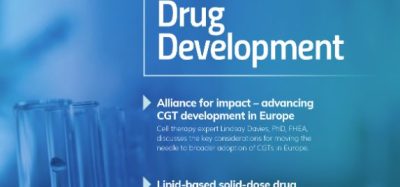Pharma funding for neglected disease research hits record high
Report shows consistent growth of the biopharmaceutical industry investment in neglected diseases…
Bio-pharmaceutical industry funding into R&D for neglected diseases has reached its highest level ever, exceeding US$3.5 billion in 2017, according to the eleventh annual G-FINDER report published this week.
This is up seven percent from the previous year and is driven primarily by new investments from the United Kingdom, European Commission, Germany and India, the report found.
“It’s exciting to see record-breaking support for research into these diseases, which prevent individuals from reaching their full potential and trap communities in cycles of poverty,” said the report’s lead author, Dr Nick Chapman. “Thanks to sustained investment, 2018 alone brought new game-changing tools for debilitating diseases like sleeping sickness, river blindness and malaria. There are many more potentially transformative tools in the pipeline, which we can achieve with continued commitment.”
The biopharmaceutical industry continues to focus their investments on HIV/AIDS, malaria and tuberculosis. However, the report also notes a notable increase in pharmaceutical companies’ investment for diarrhoeal disease R&D (up $11m, 80 percent), on the back of new investment in vaccines for shigellosis (up $7.3m, 132 percent) and rotavirus (up $3.1m, 58 percent).
The G-Finder report highlights several significant new product approvals in 2017 that the R&D biopharmaceutical industry has contributed towards. Noteworthy innovations include: fexinidazole, the first all-oral, short course treatment for both stages of sleeping sickness; moxidectin, the first new onchocerciasis treatment in 20 years; tafenoquine, the first single-dose radical cure for P. vivax malaria; Typbar TCV, the first conjugate typhoid vaccine; and ROTASIIL, a heat-stable rotavirus vaccine designed for developing country use.
The public sector continued to be the most significant funding source for neglected disease research, contributing nearly two-thirds of the total. Significant new investments came from Europe, with the United Kingdom government scaling up its contribution by 89 percent ($87m) to $186m, the European Commission by 50 percent ($40m) to $119m, and the German government by 39 percent ($18m) to $65m.
Public funding from low- and middle-income countries (LMICs) increased by 19 percent ($17m) to $105m, with India contributing nearly three-quarters of this total. The Indian government increased its contribution by 38 percent ($21m) to $76m, maintaining its position as the fourth-largest public funder globally, and providing the highest reported level of public funding from an LMIC government. Funding from the South African government also jumped 24 percent ($2.7m) to $14m.
The United States government held its spot as the world’s largest public funder, providing an additional 1.5 percent ($23m) for a total of $1,595m. Several funders also strengthened their contributions for a second consecutive year, including the government of Japan and non-governmental organisations such as Unitaid, Médecins Sans Frontières and Gavi.
The report found the focus of additional funding was on product development, with 90 percent of the new investment going to either core funding or clinical development to support products as they move through the final stages of the pipeline.
Despite funding reaching a record high, overall levels still fall well short of global targets. Not a single government met the World Health Organization recommendation that Member States dedicate at least 0.01 percent of their GDP to research the health needs of developing countries. The United States took the lead against this measure, meeting 82% of the target, and the United Kingdom followed with 71 percent. However, all other countries scored below 50% of the target.
“The increase in funding for neglected disease research is good news,” said David Baltimore, Nobel Laureate and President Emeritus at California Institute of Technology. “But, to realise the massive potential of science to improve the lives of the world’s poorest, we will need strong funding for both basic research and new product development.”










